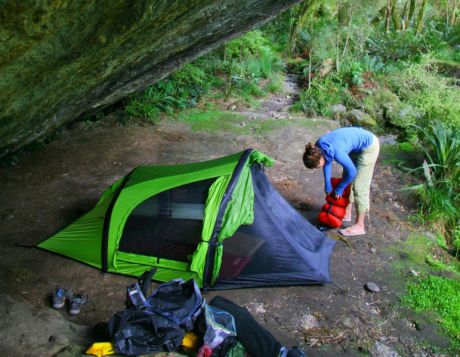Innovative shelters off the grid

Inflatable_tent
By Chris McTiernan (Chris McTiernan) [CC BY-SA 3.0 (http://creativecommons.org/licenses/by-sa/3.0)], via Wikimedia Commons
Natural disasters such as earthquakes, floods and wind storms render thousands of people homeless every year. Portable, environment-friendly inflatable structures can provide a safe temporary emergency shelter for people without a roof.
Climate change is increasingly causing a rise in adverse or catastrophic
events around the world. Homelessness and mass migration are only some
of the worst impacts. In such cases, flying squads or national emergency
squads and international organisations need to be able to quickly
establish temporary housing or deploy schools, hospitals and transport
infrastructures.
Within ULITES (Ultra-lightweight structures with integrated photovoltaic solar cells: Design, analysis, testing and application to an emergency shelter prototype), project partners aimed to respond to the increasing need for portable post-disaster facilities that reduce the economic and social impact of homelessness on societies and individuals.
ULITES successfully produced an emergency shelter prototype that represents a new, lighter and more practical way to provide temporary housing. In addition to being portable and lightweight, it is also autonomous.
The prototype measures 7.5 m length and consists of three inflatable tubes, each one weighing 250 kg, which cover an area of 150 m2. The set-up time lasts less than 2 hours with a team of 8 people. Inflation time to reach a pressure of 20 millibar takes about 30 minutes. To maintain the inflated structure, it is necessary to fill it with air for around 5 minutes per day. Inflation is automatically activated when pressure decreases below 10 millibar. The total energy consumption is estimated to be 250 W per day. There is an option for front and back doors, depending on the needs. The structure is also modular, allowing to easily increase the length just adding new tubes.
Researchers used carbon fibre straps and PVC-coated fabric membranes to produce the prototype shelter and integrated photovoltaic cells into the membranes. Conventional low-pressure inflatable structures were permanently connected to a power source because of big amounts of air losses. However, the ULITES shelter supplies electricity without being connected to the grid thanks to the integrated solar cells and energy storage devices that release power when required. In addition, advanced coating and welding techniques in the manufacturing process minimise air leakage.
Ulites shelter design is optimized thank to the creation of a Virtual Wind Tunnel. This is an extremely important computational tool for the design of such lightweight structure that consider its interaction with the wind.
ULITES' solution also reduces design and maintenance costs thanks to the reduced number of wind tunnel experiments, lower energy consumption and easy set-up when compared to rigid structures.
published: 2016-02-29

